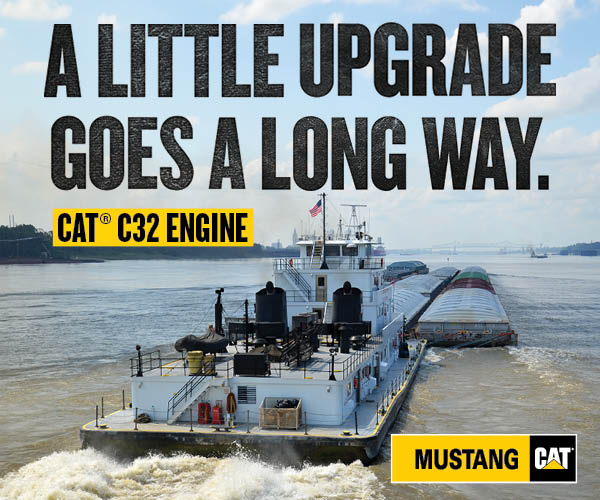Washington Waves: November 12, 2018
Washington, D.C.—A long-stalled infrastructure proposal could be one of the big winners of the midterm elections that left Americans again with a divided government.
President Donald Trump, Senate Majority Leader Mitch McConnell, Senate Minority Leader Chuck Schumer and House Democratic Leader Nancy Pelosi took turns listing infrastructure as an issue that could generate enough bipartisan support to pass in the incoming Congress where Republicans will control the Senate and Democrats the House.
Pelosi told reporters infrastructure came up during her conversation with Trump on election night.
“I hope that we can do that because we want to create jobs from sea to shining sea,” she said.
In his wide-ranging press conference the day after the elections, Trump included infrastructure as one of the issues he and Democrats would work on together.
“I really believe we’ll be able to do that,” he said.
But, major details such as how to fund the kind of massive infrastructure package Trump campaigned on in 2016 remained unresolved.
He also made it clear hope for such a bipartisan deal could be dashed if House Democrats use their reacquired power to launch investigations of him and his administration.
GAO Corps Review
Plagued by persistent schedule delays and cost overruns for inland waterways construction projects, the U.S. Army Corps of Engineers should define and measure deferred maintenance for inland waterways and pursue changes to increase its ability to use construction funding more efficiently. Those were the two recommendations made by the U.S. Government Accountability Office (GAO).
GAO reviewed how the Corps allocates funding for inland waterways projects based on risk and economic benefits.
“However, the Corps does not know how much deferred maintenance exists for inland waterways because there is no agreed upon definition for deferred maintenance,” the GAO stated.
GAO also stated that practices such as incremental funding and contracting projects in separable pieces result in increased costs and are less efficient than contracting an entire project at once.
As an example, it cited the Kentucky Lock Addition project, which could cost roughly $300 million more than originally estimated cost as a result of this contracting approach.
“The Department of Defense concurred with GAO’s recommendations,” the report stated.
New Academy Superintendent
Jack Buono, a retired president and CEO of SeaRiver Maritime Inc., a shipping subsidiary of ExxonMobil, has been named superintendent of the U.S. Merchant Marine Academy (USMMA) at Kings Point, N.Y.
Buono was scheduled to take command November 9, succeeding Rear Adm. James Helis.
A 1978 graduate of the academy with a degree in marine transportation, Buono was commissioned an ensign in the U.S. Naval Reserve and served for 11 years.
He worked his way up from a U.S. Coast Guard licensed Third Mate to an unlimited Master Mariner with ExxonMobil.
In 1991, Buono transferred ashore and, after rising through several management positions, was elected president and CEO of SeaRiver Maritime, where he served until his retirement in 2016.
“Jack Buono is the ideal candidate to take the academy to the next level,” said Maritime Administrator Mark Buzby, who announced the selection.
“He has impeccable credentials on the waterfront and, as an alumnus, fully understands the academy’s mission to provide its students with the highest caliber of training and education needed to lead afloat and ashore.”
Helis left the superintendent’s post after six years to become a special assistant to Buzby in Washington, D.C.
During his tenure at USMMA, Helis dealt with financial and management issues that had threatened USMMA’s accreditation and an investigation into sexual misconduct allegations.
As part of the selection process, MarAd stated, Buono met with a number of midshipmen, USMMA faculty, staff and alumni as well as industry leaders.
Levee Safety
Members of the National Waterways Conference (NWC) discussed a levee safety program with leaders of the U.S. Army Corps of Engineers at a recent partnership meeting.
Early next year, the NWC stated in a news alert, the Corps is expected to release Engineer Circular 1165-2-218 to articulate the program’s mission, principles and objectives as well as other aspects of the program.
“In conjunction with the levee safety program Engineer Circular, [the Corps] has also been revising its levee inspection procedures,” the NWC stated, adding the new draft procedures also will be available for comment along with the draft EC early next year.
The NWC said the meeting also focused on the newly released Engineer Circular 1165-2-220, Policy and Procedural Guidance for Processing Requests Pursuant to Section 408.
Key changes in the new circular include the use of categorical permissions, a new approach for multi-phase reviews and a more targeted approach to environmental compliance, said the NWC, which had recommended some of the changes in the circular.


